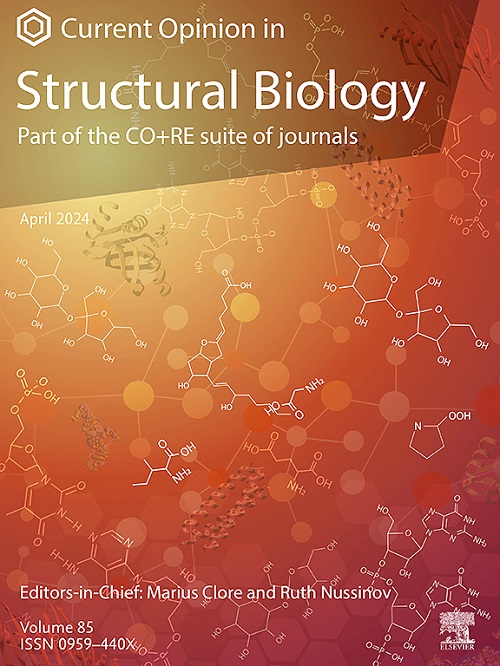染色质高阶折叠受连接体DNA偏好值的影响。
IF 6.1
2区 生物学
Q1 BIOCHEMISTRY & MOLECULAR BIOLOGY
引用次数: 0
摘要
核小体间隔的特定值长期以来与不同的染色质组织有关,但最近的研究揭示了常规连接体DNA长度的微小变化带来的令人惊讶的结构和功能后果。这篇观点文章回顾了经典的10n和10n + 5间距的实验和建模研究,强调了这5bp的差异如何改变核小体的取向、纤维拓扑结构和高阶染色质行为。我们强调模型参数和系统设计的差异如何产生连接体DNA长度对染色质结构影响的不同趋势。然而,体内染色质结构与其他细胞变量如盐条件、表观遗传标记、蛋白质和RNA结合等一起反映了核小体间距的异质性,它们共同塑造基因折叠并指导基因调控。本文章由计算机程序翻译,如有差异,请以英文原文为准。
Chromatin higher-order folding as influenced by preferred values of linker DNA
Specific values of nucleosome spacing have long been associated with distinct chromatin organization, but recent studies reveal surprising structural and functional consequences of small changes in regular linker DNA length. This opinion article revisits experimental and modeling studies addressing the classic 10n versus 10n + 5 spacing, highlighting how this 5 bp difference can alter nucleosome orientation, fiber topology, and higher-order chromatin behavior. We underscore how differences in model parameters and system design yield different trends for the effect of linker DNA lengths on chromatin architecture. However, chromatin structure in vivo reflects the heterogeneous nucleosome spacing in combination with other cellular variables like salt conditions, epigenetic marks, and protein and RNA binding, which work together to shape gene folding and direct gene regulation.
求助全文
通过发布文献求助,成功后即可免费获取论文全文。
去求助
来源期刊

Current opinion in structural biology
生物-生化与分子生物学
CiteScore
12.20
自引率
2.90%
发文量
179
审稿时长
6-12 weeks
期刊介绍:
Current Opinion in Structural Biology (COSB) aims to stimulate scientifically grounded, interdisciplinary, multi-scale debate and exchange of ideas. It contains polished, concise and timely reviews and opinions, with particular emphasis on those articles published in the past two years. In addition to describing recent trends, the authors are encouraged to give their subjective opinion of the topics discussed.
In COSB, we help the reader by providing in a systematic manner:
1. The views of experts on current advances in their field in a clear and readable form.
2. Evaluations of the most interesting papers, annotated by experts, from the great wealth of original publications.
[...]
The subject of Structural Biology is divided into twelve themed sections, each of which is reviewed once a year. Each issue contains two sections, and the amount of space devoted to each section is related to its importance.
-Folding and Binding-
Nucleic acids and their protein complexes-
Macromolecular Machines-
Theory and Simulation-
Sequences and Topology-
New constructs and expression of proteins-
Membranes-
Engineering and Design-
Carbohydrate-protein interactions and glycosylation-
Biophysical and molecular biological methods-
Multi-protein assemblies in signalling-
Catalysis and Regulation
 求助内容:
求助内容: 应助结果提醒方式:
应助结果提醒方式:


